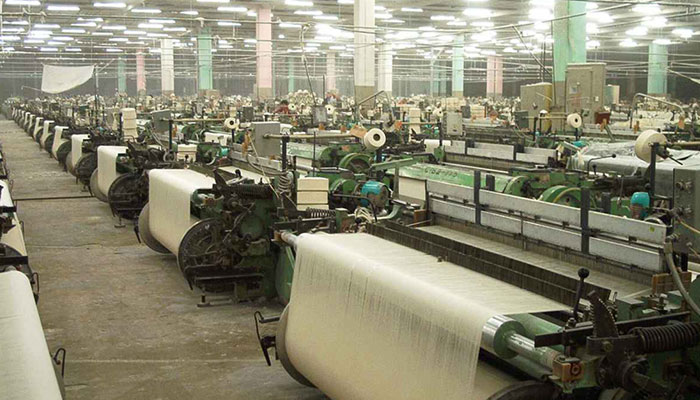Big industry output jumps by 8.2pc in January
ISLAMABAD: Large-scale manufacturing (LSM) grew 8.2 percent in January 2022 with a significant improvement in demand from world economies, supported by special incentives and moderate borrowing rates, latest data showed on Friday.
According to Pakistan Bureau of Statistics (PBS), the LSM picked up by 4.2 percent over the previous month, showing a healthy performance almost in all categories. The figures are calculated based on fiscal year 2015-16.
The increasing demand from importing economies and some local support to the industrial sector in the form of subsidised energy, easy raw material imports, and comparatively low-cost of borrowing, helped boost manufacturing activities.
The LSM accounts for 80 percent of the manufacturing sector. Moreover, industrial production jumped 7.6 percent in the seven months (July-January) of the fiscal year 2021-22 over the same period of the last fiscal.
During the period, the products, whose manufacturing gained momentum included food, tobacco, textile, wearing apparel, chemicals, iron & steel products, automobiles, and furniture, while manufacturing of fertiliser, pharmaceuticals, rubber products, and electrical equipment decreased over the same period last year.
The PBS has also reported the LSM data based on fiscal year 2005-06. According to this calculation, LSM growth arrives at 6.3 percent in January 2022 over same month of last fiscal and 7.9 percent over the previous month.
Whereas, July-January 2021-22 average LSM growth came at 3.9 percent over the same period last fiscal. Oil Companies Advisory Council, logging outputs of 11 oil and petroleum products, reported a 0.5 percent year-on-year growth in outputs in July-January FY22.
In January this year, oil sector production, however, declined 1 percent over the same month of last year and increased 10.7 percent compared to the previous month. Ministry of industries, measuring output trend of 36 items, recorded a 6.9 percent growth in production during these seven months. In January 2022, the ministry reported a growth increase of 8.5 percent over the same month and 7.8 percent over December 2021.
Provincial bureau of statistics, which keeps an eye on 65 products, recorded 9.7 percent growth in July-January 2021-22 over the corresponding period of FY21. In January 2022, its output increased 9.3 percent over the corresponding month, while production reduced 1.7 percent over December 2021.
During July-Jan FY22, the food sector grew 3.4 percent, beverages 2.5 percent, tobacco 21.9 percent, textiles 2.9 percent, wearing apparels 18.3 percent, leather products 4.5 percent, wood products 172.2 percent, paper & board 8.2 percent, coke and petroleum products 0.5 percent, chemical products 15.5 percent, iron & steel products 17.5 percent, machinery & equipment 20.6 percent, automobiles 63.5 percent, furniture 553 percent and other manufacturing (football) increased 22.2 percent over the same period of last year.
However, production of fertiliser declined 0.5 percent, fabricated metal 5.5 percent, and computer, electronics, and optical products 1.1 percent. Besides, pharmaceuticals output also shrank 3.5 percent, rubber products 25.5 percent, and electronics production slipped 1.2 percent during the period.
Year-on-year, in January 2022, food production grew 9.9 percent, beverages 11.8 percent, tobacco 23.4 percent, textiles 0.0 percent (no growth), wearing apparel 7.4 percent, wood products 184.8 percent, paper & board 7.7 percent, chemical products 7.2 percent, fertiliser up 28.8 percent, iron & steel products 12.9 percent, computer, electronics, and optical products 13.5 percent, machinery & equipment 54.5 percent, automobiles 37 percent, furniture 437.5 percent, and other manufacturing (football) 42.3 percent. Pharmaceuticals output also increased 5.8 percent and electronics 9.0 percent in January 2022.
Whereas leather goods production declined 3.9 percent, coke and petroleum products 1 percent, nonmetallic products 10.7 percent, fabricate metals 9.9 percent and rubber products fell 2 percent over the same month of last year.
-
 Prince Harry Relationship With King Charles 'not Straightforward,' Says Expert
Prince Harry Relationship With King Charles 'not Straightforward,' Says Expert -
 Truth Behind Jennifer Lopez's 'rude' Glambot Moment Laid Bare
Truth Behind Jennifer Lopez's 'rude' Glambot Moment Laid Bare -
 Nicole Richie Still Loves This Makeup Trend From Her Teen Years
Nicole Richie Still Loves This Makeup Trend From Her Teen Years -
 Meghan Markle Plans To Hide Behind Kids Over Return To UK
Meghan Markle Plans To Hide Behind Kids Over Return To UK -
 Dolly Parton Marks Major Milestone As State Governor Honors Her Legacy
Dolly Parton Marks Major Milestone As State Governor Honors Her Legacy -
 Karley Scott Collins Reacts To Rumours Of Her Dating Keith Urban
Karley Scott Collins Reacts To Rumours Of Her Dating Keith Urban -
 Meghan Markle Sends Shockwaves With Promise Of Chaos: ‘Has The Power To Upset The Royals’
Meghan Markle Sends Shockwaves With Promise Of Chaos: ‘Has The Power To Upset The Royals’ -
 Jesy Nelson, Zion Foster Call It Quits Amid Twins' Heartbreaking Diagnosis: Source
Jesy Nelson, Zion Foster Call It Quits Amid Twins' Heartbreaking Diagnosis: Source -
 What King Charles Told Princess Diana In Letter Before Wedding?
What King Charles Told Princess Diana In Letter Before Wedding? -
 David Crosby Said This One Singer Had 'no Talent At All'
David Crosby Said This One Singer Had 'no Talent At All' -
 Meghan Markle’s Return Risks Setting Off Something ‘exhausting’ And William, Kate Are Bracing
Meghan Markle’s Return Risks Setting Off Something ‘exhausting’ And William, Kate Are Bracing -
 Bruce Springsteen Reveals Singer He Finds To Be Greatest Rock And Roll Voice
Bruce Springsteen Reveals Singer He Finds To Be Greatest Rock And Roll Voice -
 Andrew Mountbatten Windsor Ensures Teddy Bear Collection Reaches New Home
Andrew Mountbatten Windsor Ensures Teddy Bear Collection Reaches New Home -
 Ben Affleck Recalls 'throwing Up' During 'Armageddon's Final Scene
Ben Affleck Recalls 'throwing Up' During 'Armageddon's Final Scene -
 Kevin Costner Marks 71st Birthday With Decades-old Throwback Photos
Kevin Costner Marks 71st Birthday With Decades-old Throwback Photos -
 Why Royal Lodge Fell Into Disarray Under Andrew: Insider Exposes Loophole
Why Royal Lodge Fell Into Disarray Under Andrew: Insider Exposes Loophole




